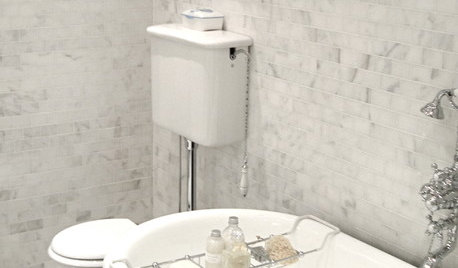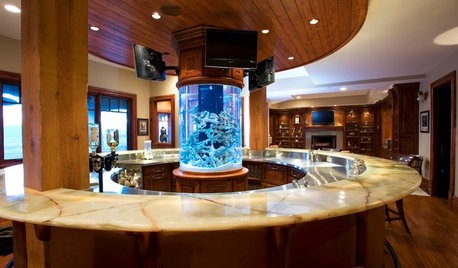Pressure tank, water pump or ?
gtrshop
10 years ago
Related Stories

VINTAGE STYLEVintage Style: High-Tank Toilets
Homeowners are adding the feeling of yesteryear in today’s bathrooms
Full Story
DECORATING GUIDESDesigning Nemo: 30 Fish Tanks Make a Decorative Splash
Bring an otherworldly glow and a calming vibe to your home with the living art of an aquarium
Full Story
GREEN BUILDINGHow to Harvest Rainwater for Your Garden
Conserve a vital resource and save money by collecting stormwater for irrigation in a barrel or tank
Full Story
GREAT HOME PROJECTSHow to Switch to a Tankless Water Heater
New project for a new year: Swap your conventional heater for an energy-saving model — and don’t be fooled by misinformation
Full Story
SAVING WATER11 Ways to Save Water at Home
Whether you live in a drought-stricken area or just want to help preserve a precious resource, here are things you can do to use less water
Full Story
SAVING WATERXeriscape Gardens: How to Get a Beautiful Landscape With Less Water
Conserve water and make gardening much easier with the xeriscape approach’s 7 principles
Full Story
GREEN BUILDINGJust Add Water: Rain Barrel Magic
Take your rainwater storage from practical to beautiful with a new breed of design-friendly rain barrels
Full Story
GREEN DECORATINGEasy Green: Big and Small Ways to Be More Water-Wise at Home
These 20 tips can help us all make the best use of a precious resource. How do you save water in summer?
Full Story
LIFEThe Top 5 Ways to Save Water at Home
Get on the fast track to preserving a valuable resource and saving money too with these smart, effective strategies
Full Story
GREEN BUILDINGWater Sense for Big Savings
Keep dollars in your pocket and preserve a precious resource with these easy DIY strategies
Full Story







bus_driver
gtrshopOriginal Author
Related Professionals
Feasterville Trevose Kitchen & Bathroom Remodelers · Bay Shore Kitchen & Bathroom Remodelers · Creve Coeur Kitchen & Bathroom Remodelers · Gilbert Kitchen & Bathroom Remodelers · Glen Allen Kitchen & Bathroom Remodelers · Lomita Kitchen & Bathroom Remodelers · Los Alamitos Kitchen & Bathroom Remodelers · Mesquite Kitchen & Bathroom Remodelers · Patterson Kitchen & Bathroom Remodelers · Phoenix Kitchen & Bathroom Remodelers · Sioux Falls Kitchen & Bathroom Remodelers · Skokie Kitchen & Bathroom Remodelers · Vashon Kitchen & Bathroom Remodelers · Westchester Kitchen & Bathroom Remodelers · Sharonville Kitchen & Bathroom Remodelersbus_driver
gtrshopOriginal Author
bus_driver
gtrshopOriginal Author
laurabrook
gtrshopOriginal Author